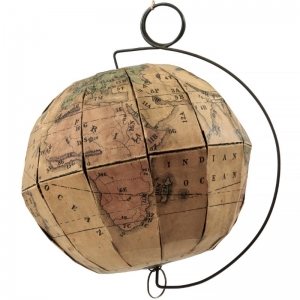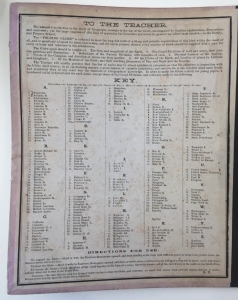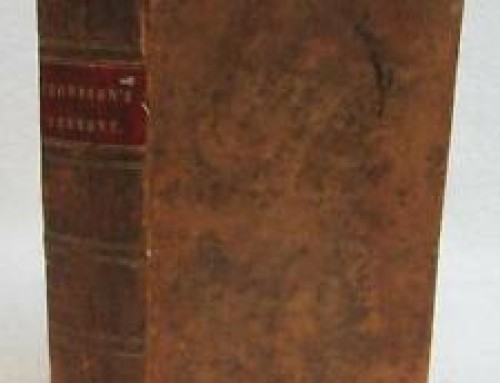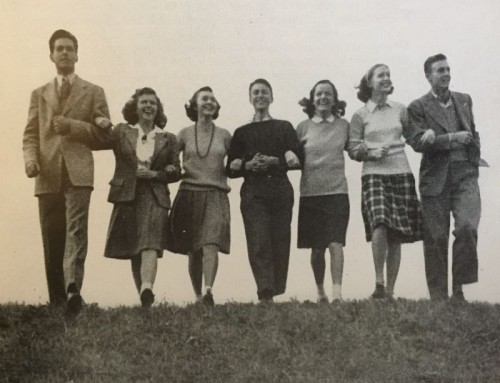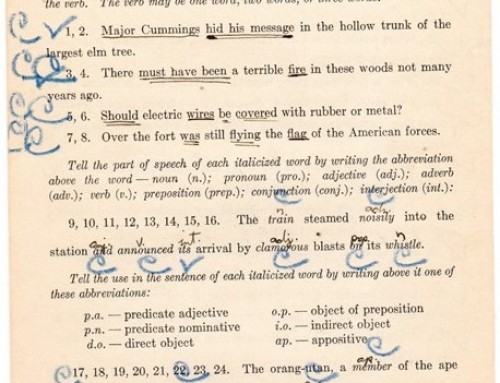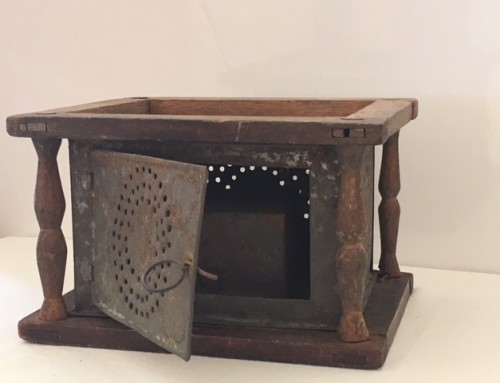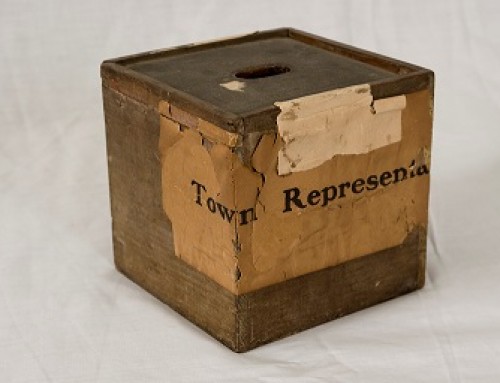This folding globe was designed by Dennis Townsend and patented in 1869. Townsend was a school teacher from Felchville, Vermont.
His interest was in producing an inexpensive globe that could be owned and used by students instead of a flat map, “which without explanation, is a false illustration, and can be understood only by a process of reasoning entirely beyond the mind of the child.”
This collapsible globe has an internal mechanism for holding it open. Accompanying the globe are detailed teaching instructions. For instance when instructing about the orbit of the sun, it is suggested that an apple or an inkstand be placed on a pile of books in the center of a table to the height of the globe.
Townsend saw the great need in common schools for an affordable globe with teaching instructions, writing:
“City schools are generally supplied with all needed apparatus, but, that the globes now in use do not meet the requirement of public schools in the country, needs no other proof than the fact, that, while every intelligent teacher admits the importance of a globe in teaching the rudiments of geography, very rarely any of these schools are found supplied with one.”
New Boston Schoolhouse, Norwich, VT
Perhaps one of Norwich’s 20 schoolhouses might have had one of these globes, but probably not. The mid 19th-century Norwich Superintendent of Schools annual reports rarely mention equipment. They often remark on the conditions of the buildings (which range from “plain but comfortable” to “crumbling”), methods of teaching (that “relieve monotony and excite the strongest interest”), discipline (the presence or absence of whispering), and attendance (416 absences and 44 instances of tardiness registered in 9 weeks at one school in 1866).
It isn’t until the 1882 report where we see mention of school equipment. Here the Superintendent wrote:
In most of the districts the school houses are not what they should be. The seats are very hard for the children to sit on, and the appliances for illustration, such as blackboards, maps, and globes, are inadequate. Under the circumstances the teachers deserve great praise for doing so well. Let us furnish good school houses; let us supply them with all needed furniture; let us employ good teachers. In this way we shall so raise the grade of our common schools that it will be possible in the poorest of them to secure a good education.
Last summer, our intern Kevin Hybels, scanned all our school photographs. They are all online here at Flickr. This winter Norwich Historical Society will be opening an exhibit on education in Norwich. Stay tuned!

